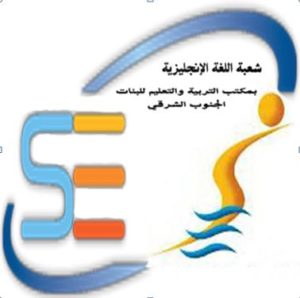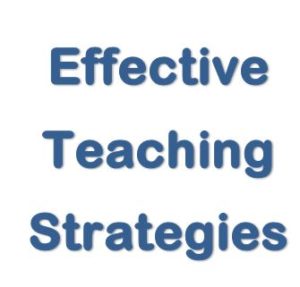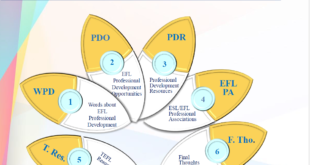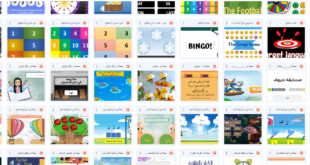

Active Learning any instructional method that engages students in the learning process.
It requires students to do meaningful learning activities and think about what they are doing.
Concept Mapping
represent knowledge of a subject. They are basically visual ways to represent information. You can create maps, pictorial organizers, webs that arrange information:
* according to main ideas, subtopics, and details
* in sequence
* to show the relationships between the different parts
* according to the similarities and differences between two or more concepts
by its components, as in the elements of a story .
. . . and lots of other ways.
How Do They Work?
Since you know that some of your students are visual learners, and that a picture is worth a thousand words, then you should have in your toolbox some ways to organize ideas, facts, and concepts graphically. Graphic organizers are just the thing.
Power Teaching
Steps to be followed :’’Mirror’’ You say “mirror” and your students respond “mirror.” They then pick up their hands ready to mimic your gestures. As students imitate your motions, their motor cortex, the brain’s most reliable memory area, is automatically engaged. ’’Teach’’ / ‘’Okay’’ This technique allows you to simultaneously engage your students in all four learning modes — seeing, saying, hearing and doing.’’ Switch’’ some of the students are chronic talkers and others are listeners. In this technique, we want the talkers to learn to listen and vise versa.
Techniques in Power Teaching:
a-The Organizer: Five Classroom Rules: (Follow directions quickly. -Raise your hand for permission to speak.-Raise your hand for permission to leave your seat. -Make smart choices. -Keep your dear teacher HAPPY
b- Attention Getter: Class-Yes
c-The Focuser: Hands and Eyes
Visit::http://www.bing.com/videos/search?q=power+teaching+techniques&qpvt=power+teaching+techniques&FORM=VDRE
Games
Games are highly motivating because they are amusing and interesting. They can be used to give practice in all language skills and be used to practice many types of communication.
How to Choose Games
* A game must be more than just fun. * A game should involve “friendly” competition. * A game should keep all of the students involved and interested. * A game should encourage students to focus on the use of language rather than on the language itself. * A game should give students a chance to learn, practice, or review specific language material.
Songs
Songs can help students especially young learners improve their listening skills and pronunciation. Songs can also be useful tools in the learning of vocabulary, sentence structures, and sentence patterns. Per-haps the greatest benefit to using songs in the classroom is that they can be fun.
Please: use only what supports your lesson and goes with our Islamic values.
Visit: http://www.songsforteaching.com/esleflesol.htm
Role Playing
It is a teaching strategy in which students assume the role of others. It promotes active and personal involvement in learning.
Students are asked to “act out” a part. In doing so , they get better idea of the concepts being discussed e.g. a role of a doctor talking to his patients.
Cooperative Learning
It is a successful teaching strategy in which small teams, each with students of different ability levels use a variety of learning activities to improve their understanding of a subject.
Each member of a team is responsible not only for learning what is taught, but also for helping
Kagan Structures
They are instructional strategies designed to promote cooperation and communication in the classroom, boost students’ confidence and retain their interest in classroom interaction
Basic Principles
- Positive Interdependence
(sense of sink or swim together)
- Face-to- Face Interaction
(helping each other learn, applauding success)
- Individual Accountability
(each member has to contribute to the group to achieve its goals)
- Interpersonal And Small Group Skills
(communication, trust, leadership, decision making, and conflict resolution)
- Group Processing
(reflecting on how well the team is functioning and how to improve)
Cooperative Learning
Kagan Structures
Think Pair Share
It is a method that allows students to engage in individual and small-group thinking before they are asked to answer questions in front of the whole class. There are four steps to this method.
Step One – Groups of four students listen to a question posed by the teacher.
Step Two – Individual students are given time to think and then write their responses
Step Three – Pairs of students read and discuss their responses.
Step Four – A few students are called on by the teacher to share their thoughts and ideas with the whole class.
This method can be very useful and works when teachers require students to formulate hypotheses about the outcome of an experiment before it is done.
One-minute Paper
A “one-minute paper” may be defined as a very short, in-class writing activity (taking one minute
or less to complete) in response to an instructor-posed question, which prompts students
to reflect on the day’s lesson and provides the instructor with useful feedback.
Examples of questions used as minute -paper prompts:
*What was the most surprising and/or unexpected idea expressed in today’s discussion?
*In your opinion, what was the most useful idea discussed in today’s class?
*Would you agree or disagree with this statement .? Why?
*What relationship did you see between today’s topic and other topics previously covered in this
course
Number Heads Together
- Divide the students into groups of four and give each one a number from one to four.
- Pose a question or a problem to the class.
- Have students gather to think about the question and to make sure everyone in their group understands and can give an answer.
- Ask the question and call out a number randomly.
- The students with that number raise their hands, and when called on, the student answers for his or her team.
Round Robin
. Teacher poses a question.
- Teacher assigns Think Time.
- Team/group takes turns, verbally, giving responses
All Write Round Robin
- Each teammate has paper and pencil/pen.
- Teacher announces a question/topic and gives “ Think Time”.
- Teammate begins with a clockwise rotation.
- As each teammate says her answer, each teammate writes the answers on their own paper.
- Sharing continues in clockwise rotation and is over when teacher says “Stop”.
Round Table
- Teacher asks one student from each group to take out necessary materials.
- Teacher poses a project, question with multiple answers, a topic to write about, or a task that has many possible solutions, steps or procedures
- In teams, students take turns passing the paper/project, each making one contribution
Rally robin
Teacher poses a question and allows Think Time. Partners take time answering orally.
Rally Table
- Teacher announces the topic.
- Teacher gives students “think time”.
- In pairs, Partner A writes an answer to the topic then passes paper and pencil to Partner B.
- Partner B writes and answer and passes it back to Partner A.
- Steps 3 & 4 continue until the teacher calls “time”.
- Pairs compare their list with other team pair.
Fan & Pick
Each team receives a set of question cards:
1-Student 1 holds question cards in a fan and says, “Pick a card, any card!”
2- 2 picks a card, reads the question aloud and allows 5 seconds of “think time”.
3– Student 3 answers the question.
4-Student 4 paraphrases [says in own words] and praises or coaches.
5-Students rotate roles one person clockwise for each new round.
Jigsaw
Students are members of two groups: home group and expert group. In the heterogeneous home group, students are each assigned a different topic. Once a topic has been identified, students leave the home group and group with the other students with their assigned topic. In the new group, students learn the material together before returning to their home group. Once back in their home group, each student is ac-countable for teaching his or her assigned topic.
Jigsaw II
Jigsaw II is a variation of Jigsaw in which members of the home group are assigned the same material, but focus on separate portions of the material. Each member must become an “expert” on his or her assigned portion and teach the other members of the home group.
Give one Get one
The teacher poses a question and asks the students to record two responses using a piece of paper with two columns. The teacher then asks the students to stand up and move around the room to make connections with other students’ responses. Each time a student “connects” with a new student, he needs to give the student a different idea/word and get another idea/word in return (new ideas/words should be added to student’s original list). If both participants
have the same ideas, they need to work together to generate a new idea. They then can continue their journey connecting with other students. The teacher provides the students with a goal for the number of different ideas/words to collect and a time limit within which they have to collect them.
Stand & Share
All students stand with their own list (or with a team-generated list)
- Teacher calls on 1 student to share.
- Students add the shared item to their list if they don’t have it, or check it off if they do.
- Students sit when all of their items are shared, continuing to add each new item on their list.
5. When all students are seated, Stand-N-Share is complete
 بلبل English لتعليم اللغة الإنجليزية
بلبل English لتعليم اللغة الإنجليزية



